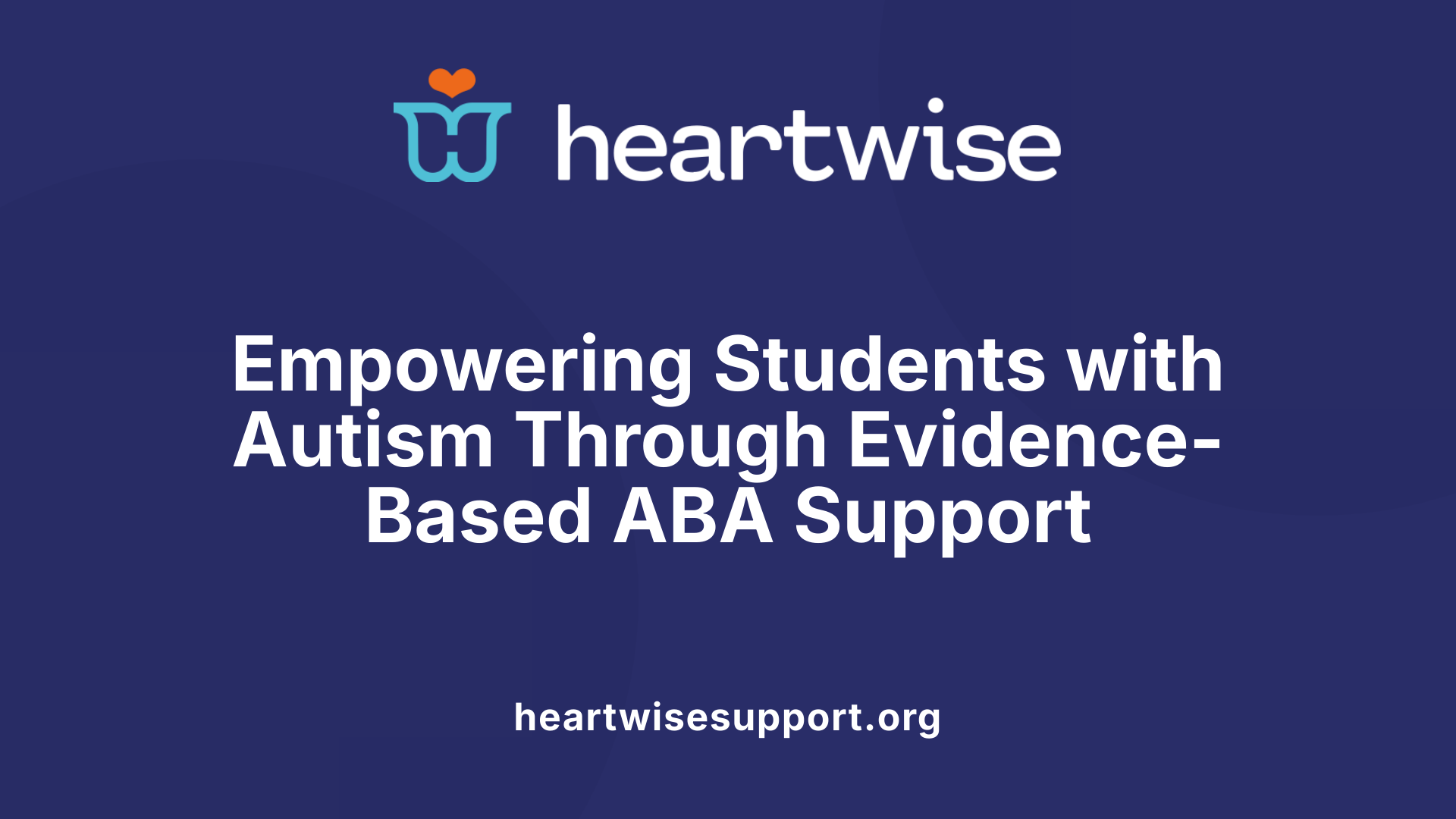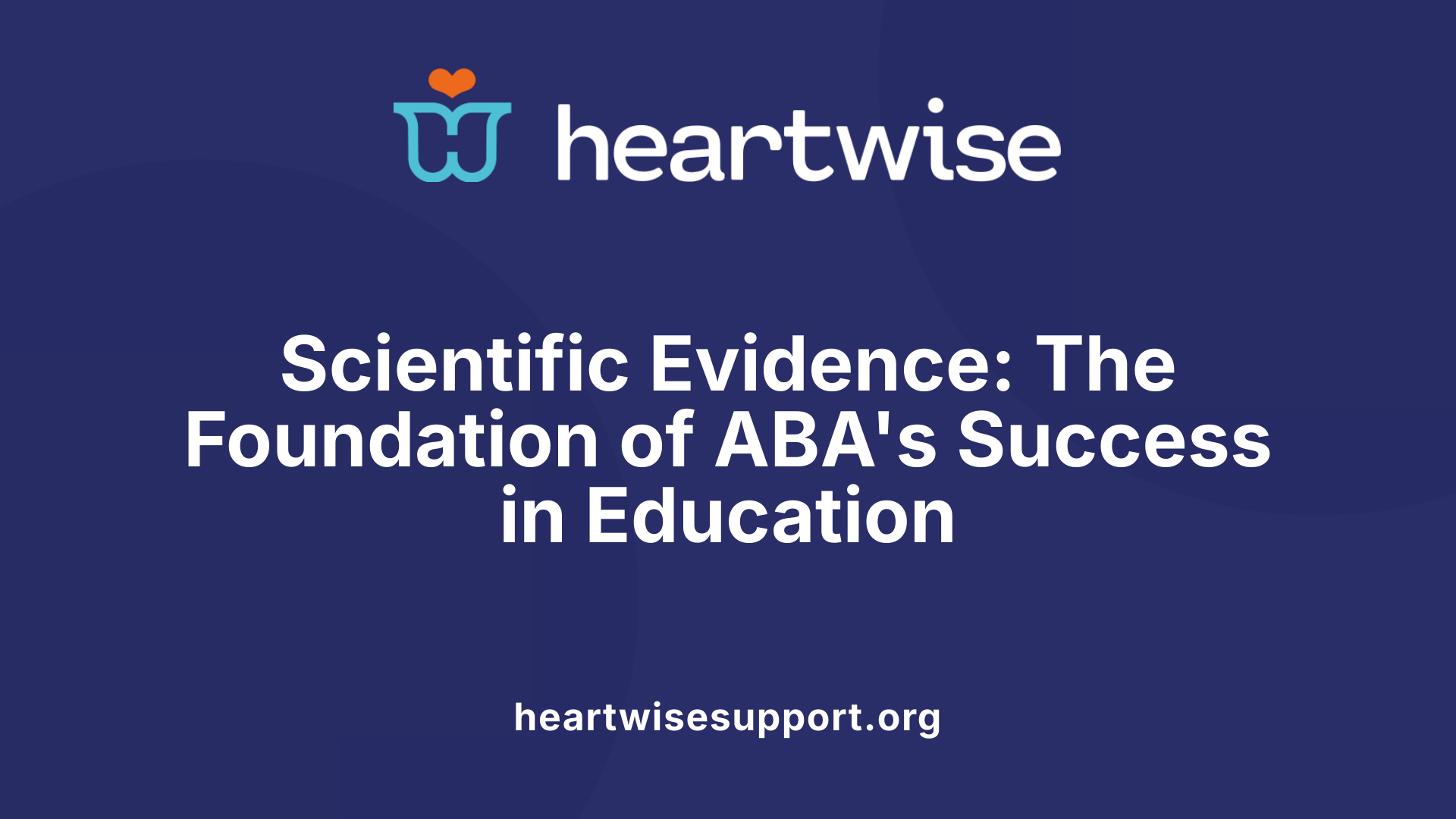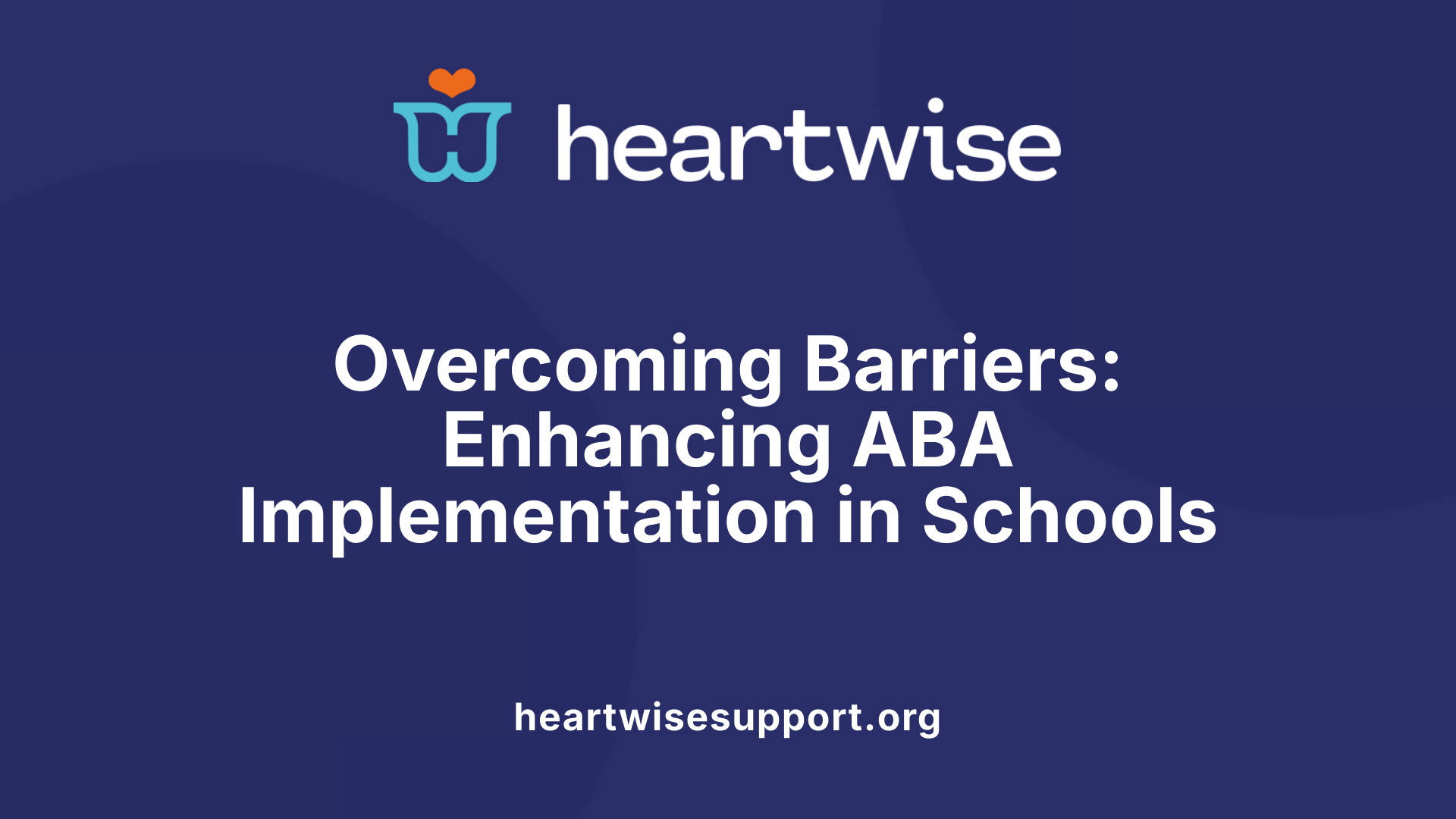Understanding the Role of ABA in Modern Classrooms
Applied Behavior Analysis (ABA) is a scientifically validated approach increasingly integrated into classroom management to foster positive student behaviors, enhance learning, and support social development. This article explores how ABA principles and strategies are shaping educational environments, making them more effective, inclusive, and responsive to diverse learner needs.
Foundations and Principles of ABA in Education
What are the core principles and vocabulary of ABA for educators and stakeholders?
Applied Behavior Analysis (ABA) is built upon several fundamental principles rooted in behavioral science. Central to ABA are concepts like reinforcement, prompting, fading, shaping, and behavioral assessments, which collectively guide effective intervention strategies.
Reinforcement, whether positive or negative, serves to increase the likelihood of a desired behavior by adding or removing stimuli contingent upon the behavior. Prompting involves providing cues—such as visual, verbal, or physical signals—to encourage correct responses, with fading gradually reducing assistance to promote independence.
Fading is a technique used to systematically lessen prompts, helping learners perform behaviors independently. Shaping involves reinforcing successive approximations toward a target behavior, gradually molding complex skills from simpler actions. The functional behavior assessment (FBA) is a systematic process to identify the reasons behind challenging behaviors, informing the development of Behavior Intervention Plans (BIPs).
Vocabulary essential to ABA includes the ABCs: antecedents, behaviors, and consequences. Antecedents are triggers or cues that precede a behavior. Behaviors are the actions of interest, and consequences are what follow the behavior, influencing its future occurrence.
Terms like chaining refer to teaching a sequence of behaviors linked together to form a complex skill. Discrete trial teaching (DTT) is a structured format involving clear cues, responses, and reinforcement, often used for skill acquisition.
In practice, educators collect data on behaviors—tracking frequency, duration, and other metrics—to evaluate intervention effectiveness. This data-driven approach ensures interventions are systematic and tailored to learner needs.
Together, these core principles and vocabulary form the foundation of ABA, allowing educators and stakeholders to design targeted, scientifically validated strategies that promote meaningful behavioral changes and skill development.
Implementing ABA Techniques in the Classroom

What are some key ABA strategies implemented in classrooms?
In classroom settings, several strategies rooted in Applied Behavior Analysis (ABA) are employed to promote positive behaviors, enhance communication, and support learning. These techniques are evidence-based and tailored to meet individual student needs, making classrooms more inclusive and effective.
Positive reinforcement and token economies
One of the most fundamental ABA methods is positive reinforcement. Teachers reward desired behaviors with praise, tokens, or privileges such as extra recess or stickers. For instance, a student who raises their hand appropriately might receive a sticker or verbal praise. To expand motivation further, token economy systems are often used. Students earn tokens for specific behaviors, which they can later exchange for preferred items or activities. This system effectively motivates students and encourages consistent positive behaviors.
Discreet trial training and naturalistic teaching
Discrete trial training (DTT) involves breaking down complex skills into small, manageable components. Each trial follows a clear cue-response-consequence pattern, such as prompting a student to identify a picture after a visual cue, then providing reinforcement. This structured approach is especially useful for teaching specific skills.
In contrast, naturalistic teaching takes advantage of students' natural interests and routines. Teachers embed learning opportunities into everyday activities, encouraging spontaneous communication and social skills. For example, during playtime, a teacher might model language or social responses related to the child's preferred activities.
Prompting and fading
Prompting involves providing cues—verbal, visual, or physical—to guide the student toward the correct response. For example, a teacher may physically prompt a student to combine blocks in a specific way. Over time, prompts are gradually reduced through fading techniques, encouraging greater independence. This process helps students master skills without persistent assistance.
Behavior chaining and task analysis
Behavior chaining targets complex routines such as handwashing or getting ready to leave the classroom. It involves teaching each step of a routine sequentially, either through forward or backward chaining, until the entire routine is mastered. Task analysis breaks skills into small, teachable steps, making complex activities manageable. For example, solving addition problems can be broken into understanding the problem, counting objects, and computing the sum, each taught separately.
Data collection and progress monitoring
Accurate data collection is vital in ABA to evaluate the effectiveness of interventions. Teachers track behaviors' frequency, duration, and intensity using tools like ABC data sheets or scatterplots. Regular monitoring helps adjust strategies promptly and ensures that interventions lead to meaningful changes in behavior.
Incorporating these techniques fosters a structured, supportive classroom environment where students can develop essential skills while reducing disruptive behaviors. The flexibility of ABA means these strategies can be tailored effectively to diverse learners, promoting a positive, inclusive educational experience.
Supporting Students with Autism and Disabilities

How can ABA support students with autism spectrum disorder (ASD) and other disabilities in the classroom?
Applied Behavior Analysis (ABA) provides a structured, evidence-based approach to help students with ASD and other disabilities thrive in educational settings. Using scientific principles, ABA focuses on understanding the reasons behind behaviors through the A-B-Cs—antecedents, behaviors, and consequences—which allows teachers and therapists to develop individualized strategies.
One of the core advantages of ABA is its ability to promote skill development across multiple domains. This includes enhancing communication skills through techniques like functional communication training and teaching social behaviors that support interaction. For academic skills, ABA employs methods such as discrete trial training and task analysis, breaking down complex tasks into manageable steps.
Moreover, ABA helps to reduce maladaptive or disruptive behaviors by identifying their triggers and applying targeted reinforcement or consequence strategies. For example, positive reinforcement—such as praise or tokens—is used to increase desirable behaviors, encouraging independence and social engagement.
ABA can be applied flexibly within the classroom environment, utilizing visual supports, structured routines, and naturalistic teaching moments. It also emphasizes the importance of family involvement, enabling consistent reinforcement and support across home and school settings.
Overall, ABA's empirical foundation allows educators to implement personalized interventions that foster social growth, communication, self-care, and academic competence, making classrooms more inclusive and supportive for students with diverse needs.
Creating an Effective ABA Classroom Environment

What does an ABA classroom look like?
An ABA classroom is designed to be a structured, predictable, and supportive setting that maximizes learning and positive behavior.
It incorporates evidence-based strategies such as positive reinforcement, token economies, discrete trial teaching (DTT), and naturalistic teaching techniques. These methods help promote social skills, communication, independence, and academic progress.
In a typical ABA classroom, you'll find a blend of individual and group instruction, with a strong focus on data collection. Teachers and therapists use this data to tailor interventions, set goals, and track progress continuously.
The physical environment is carefully arranged to support engagement and comfort. Visual supports like schedules, cue cards, and reward charts are common tools that help students understand routines and expectations.
Sensory accommodations, such as calming areas, weighted blankets, or noise-canceling headphones, may be included to help students self-regulate and stay focused.
Class sizes are usually small, often with a student-to-staff ratio around 1:3, ensuring students receive personalized attention and consistent reinforcement.
Collaboration is vital; teachers, behavior analysts, and families work together to develop and adapt programs that address each child's unique needs.
Overall, an ABA classroom environment fosters learning, independence, and positive behavior through systematic organization and individualized support.
Professional Development and Resources for Teachers
Are there professional development resources available for teachers to learn ABA techniques?
Yes, there are numerous professional development resources that help teachers understand and effectively implement ABA strategies in classrooms. Many organizations, such as Special Learning Inc., offer targeted training programs designed for educators, therapists, and parents invested in autism and behavioral management.
One example is their Level 1 ABA training course, which includes nine detailed sessions covering essential topics like teaching techniques, prompting methods, errorless teaching, and conducting functional behavior assessments. These structured courses focus on practical skills that teachers can apply immediately to support student learning.
In addition to formal training programs, a wide array of free ABA tools and resources are available for download. These materials help reinforce understanding and facilitate the practical application of ABA principles in everyday classroom management.
Continuous professional development is vital for maintaining high-quality educational practices and ensuring that teachers are confident in using scientifically supported methods to foster positive behaviors and support students' developmental goals.
Research and Evidence Supporting ABA in Education

What is the research evidence supporting the effectiveness of ABA in classroom management?
Applied Behavior Analysis (ABA) has a robust foundation of scientific research that demonstrates its effectiveness in educational settings. Studies have shown that ABA is widely recognized as an evidence-based practice, especially for students with Autism Spectrum Disorder (ASD). For children receiving intensive, long-term ABA therapy—typically 25 to 40 hours per week over one to three years—there are noticeable improvements in areas such as intellectual functioning, language development, daily living skills, and social behaviors.
In classroom environments, ABA principles are applied through various strategies like discrete trial training, token economies, and functional behavior assessments. These interventions have been linked with positive outcomes, including better social interactions, improved communication skills, and more adaptive behaviors. The science backing ABA emphasizes systematic data collection and analysis, ensuring that teaching methods are tailored effectively to each learner’s needs.
Federal mandates in the United States, such as the Individuals with Disabilities Education Act (IDEA), explicitly support the use of evidence-based practices like ABA. This policy reinforcement underscores ABA’s credibility and encourages schools to adopt scientifically validated strategies for behavior management and skill acquisition.
However, despite its proven effectiveness, implementation fidelity remains a challenge. Variations in training quality, resources, and staff expertise can impact how well ABA principles are applied. Nevertheless, ongoing research continues to validate the core premise that ABA is an effective, scientifically supported approach to improving classroom behavior, fostering social skills, and enhancing learning outcomes for diverse student populations.
| Aspect | Evidence/Outcome | Additional Details |
|---|---|---|
| Long-term effectiveness | Improvements in language, cognition, and social behaviors | Can significantly improve quality of life |
| Classroom interventions | Increased positive behaviors, reduced disruptive behaviors | Includes DTT, token systems, and functional tasks |
| Policy support | Reinforced through IDEA and other federal policies | Mandates use of research-based practices |
| Implementation challenges | Fidelity issues due to training, resources, misconceptions | Continuous training and fidelity monitoring needed |
| Ongoing research | Validates ABA’s efficacy across multiple domains | Supports development of best practices |
This body of research highlights the importance of well-implemented ABA strategies in classrooms. When applied correctly, ABA not only manages challenging behaviors but also facilitates meaningful skill development, fostering positive educational experiences for students with diverse needs.
Challenges and Future Directions for ABA in Schools

What barriers exist for effective ABA implementation in classrooms?
Implementing ABA in classroom settings often encounters several obstacles. A major challenge is the lack of comprehensive staff training. Teachers and paraprofessionals may feel underprepared to apply complex ABA strategies like discrete trial training, prompting, or token economies effectively. Insufficient resources, such as materials or time for ongoing professional development, further limit consistent application.
Another significant barrier is the presence of myths and misconceptions about ABA. Some believe reinforcement is merely bribery or that ABA promotes robotic, non-human-like behaviors. These misconceptions contribute to resistance among staff and administrators. Moreover, limited administrative support and absence of fidelity monitoring can lead to inconsistent use of ABA strategies, reducing their effectiveness.
Teachers often report feeling confident in their behavioral management, but research shows their actual knowledge of ABA may be less than their perceived expertise. This disconnect hampers the fidelity and impact of interventions.
How can myths and misconceptions about ABA be addressed?
Education plays a vital role in dispelling myths surrounding ABA. Clarifying that ABA is a scientifically based practice rooted in research can help shift perceptions. Demonstrating how reinforcement encourages natural, adaptive behaviors, rather than robotic responses, emphasizes its supportive role.
Professional development programs should include evidence-based information, modeling of techniques, and coaching sessions. These initiatives can help teachers see ABA as flexible, individualized, and aligned with best educational practices. Sharing success stories and data on improved student outcomes can foster greater trust and acceptance.
What training and resource gaps need to be filled?
Many educators lack access to specialized training in ABA techniques such as data collection, functional behavior assessments, and behavior intervention plans. Addressing this gap requires structured, ongoing professional development—beyond initial workshops—that includes modeling, coaching, and feedback.
Resources like visual aids, behavior charts, and data collection tools are essential. Schools should invest in acquiring these materials and allocate time within the school schedule for teachers to plan, implement, and review ABA strategies.
Fostering collaboration with Board Certified Behavior Analysts (BCBAs) and providing mentorship can deepen understanding and improve fidelity.
What strategies can enhance fidelity and buy-in?
Securing commitment from school leadership is crucial. Administrators should understand ABA’s evidence-based benefits and endorse its systematic implementation.
Creating a systematic process that includes needs assessment, tailored classroom systems, and fidelity checks helps maintain consistency. Incorporating ABA principles into school-wide policies can normalize its use.
Professional development should emphasize practical applications, showing how ABA strategies can be integrated seamlessly into daily routines. Incentivizing teachers and providing time for collaborative planning support higher engagement.
Overall, addressing these barriers through education, resource investment, and strategic leadership can improve the quality and consistency of ABA application in classrooms, ultimately enhancing learning and social outcomes for students with diverse needs.
Embracing Evidence-Based Practice for Lasting Impact
Integrating ABA into classroom management offers a powerful, scientifically validated framework that enhances behavioral, social, and academic outcomes for students. With ongoing professional development, strong leadership, and commitment to fidelity, educators can harness ABA strategies to create inclusive, positive learning environments where all students thrive. Embracing these methods not only supports individual learner success but also advances the broader goals of equitable and effective education.
References
- How to Use ABA in the Classroom
- ABA Classroom Management Systems | Effective School Solution
- 9 Proactive ABA Methods to Redirect Student Behavior
- Applied Behavior Analysis - Alberto and Troutman
- [PDF] Classroom Management - University of New Mexico
- How To Implement ABA In The Classroom - The Autism Helper
- Board certified behavior analysts and school fidelity of Applied ...
- Applied behaviour analysis: What do teachers of students with ...











